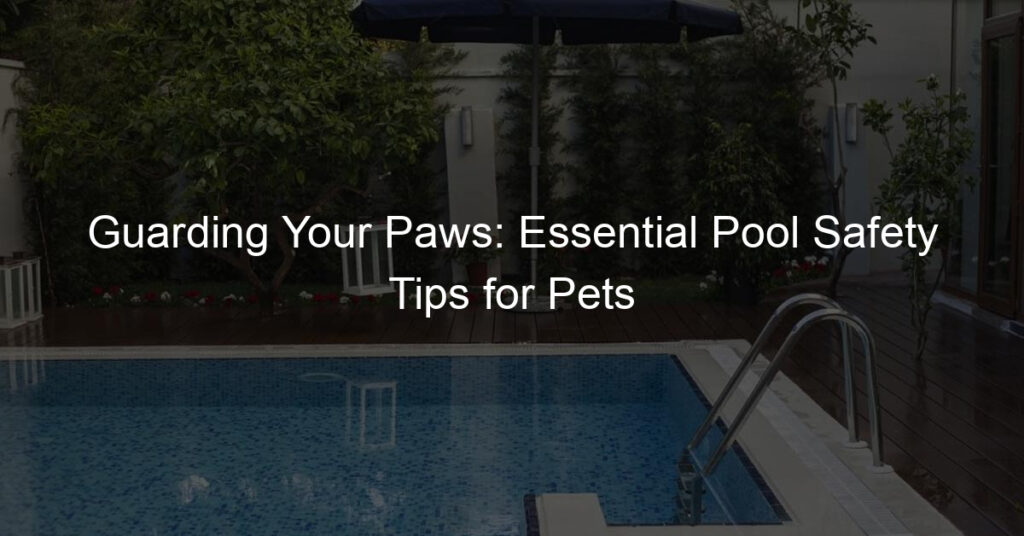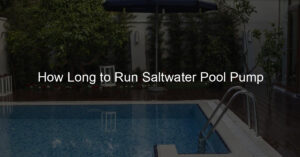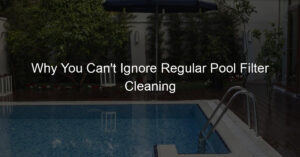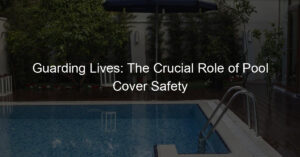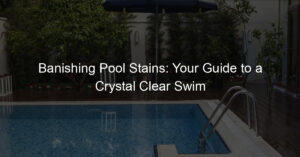Introduction to Pet Pool Safety
As pet owners, our furry friends are more than just animals; they’re part of our family. That’s why their safety, especially around swimming pools, is of utmost importance. This article aims to shed light on the significance of pet pool safety and dispel some common misconceptions.
- Importance of Pet Safety in Swimming Pools
- Common Misconceptions about Pets and Pool Safety
When it comes to swimming pools, many pet owners underestimate the potential risks they pose to their pets. According to the American Pet Products Association, nearly 70% of households in the United States have a pet. If you’re among this majority and have a swimming pool, it’s crucial to understand that pets, like children, require supervision and safety measures around pools.
Even pets that are strong swimmers can face dangers. Unexpected pool entries, exhaustion, or panic can lead to tragic accidents. Therefore, implementing safety measures can prevent accidents and ensure your pet’s well-being.
One common misconception is that all pets instinctively know how to swim. While some animals, like dogs, have a natural ‘doggy paddle,’ not all pets can swim or even stay afloat. Even those that can swim may struggle to find or climb out of the pool, leading to exhaustion and potential drowning.
Another misconception is that pets don’t need supervision around pools. Just like young children, pets can be curious and impulsive. Without proper supervision and safety measures, they can easily fall into the pool and potentially get into dangerous situations.
Understanding the importance of pet pool safety and dispelling these misconceptions is the first step towards creating a safer environment for our pets. The following sections will provide more detailed information on how to prevent pet accidents in pools, essential safety tips, and recommended safety equipment.
Understanding the Risks: Preventing Pet Accidents in Pools
When it comes to our furry friends, safety is always a top priority. This is especially true when it comes to swimming pools. Pools can pose several risks to pets, but with the right knowledge and precautions, we can help prevent accidents and keep our pets safe.
Common Pool Hazards for Pets
Let’s take a closer look at some of the most common hazards that pools can pose to our pets:
- Slippery surfaces: Wet surfaces around pools can be very slippery. Pets, especially those that are older or have mobility issues, can easily slip and injure themselves. It’s important to have non-slip surfaces around your pool and to keep your pet’s nails trimmed to help them maintain their grip.
- Pool chemicals: The chemicals used to keep pools clean can be harmful to pets if ingested or if they come into contact with their skin or eyes. Always store pool chemicals out of reach of pets, and rinse your pet off after they’ve been in the pool to remove any residual chemicals.
- Drowning risk: Not all pets are natural swimmers, and even those that are can become tired or panicked in the water. Never leave your pet unsupervised around the pool, and consider investing in a pet life jacket for added safety.
Understanding these risks is the first step towards preventing pet accidents in pools. In the next section, we’ll provide some essential tips for keeping your pets safe around pools.
Case Study: Pet Pool Accidents
Let’s take a closer look at a real-life example to better understand the risks pets face around pools. This case study involves a family pet named Max, a lively Labrador Retriever.
Max loved to play around the family’s backyard pool. One hot summer day, while his family was inside the house, Max decided to cool off in the pool. Unfortunately, he slipped on the pool’s edge and fell in. Unable to climb out due to the pool’s steep sides, Max was in the water for a while before his family found him.
Luckily, Max was rescued in time and made a full recovery. But his story serves as a stark reminder of the dangers pools can pose to our pets.
| Key Details | Insights |
|---|---|
| Pet’s Name | Max |
| Breed | Labrador Retriever |
| Incident | Slipped and fell into the pool |
| Risk Factor | Unable to climb out due to steep pool sides |
| Outcome | Rescued and made a full recovery |
Max’s story highlights the importance of pet pool safety. It’s crucial to understand the potential hazards and take steps to prevent accidents. Remember, even pets that are strong swimmers can find themselves in danger if they can’t easily exit the pool.
Keeping Pets Safe Around Pools: Essential Tips
Ensuring the safety of our pets around pools is a crucial responsibility for all pet owners. This section focuses on essential tips for training pets for pool safety.
Training Pets for Pool Safety
Training your pets for pool safety is a vital step in preventing accidents. This involves teaching them how to swim and how to use pool steps or ramps. Let’s delve into these crucial aspects.
- Teaching Pets to Swim
- Training Pets to Use Pool Steps or Ramps
Contrary to popular belief, not all pets are natural swimmers. Some may panic when they find themselves in water, which can lead to tragic accidents. Teaching your pets to swim is, therefore, a critical safety measure.
Start by introducing your pet to shallow water and gradually increase the depth as they get more comfortable. Always supervise these swimming lessons to ensure your pet’s safety. Remember, patience and positive reinforcement go a long way in making these lessons successful.
Even pets that are excellent swimmers can struggle to get out of a pool without assistance. Pool steps or ramps are essential tools that can help your pet exit the pool safely.
Train your pet to use these tools by leading them in and out of the pool using the steps or ramp. Use treats and praises to encourage them. Repeat this exercise several times until your pet can confidently use the pool steps or ramp without assistance.
Training your pets for pool safety not only ensures their well-being but also gives you peace of mind. Remember, a safe pet is a happy pet!
Creating a Pet-Friendly Pool Environment
Creating a pet-friendly pool environment is a crucial step in ensuring the safety of your furry friends. It involves implementing measures that will prevent your pets from accidentally falling into the pool and getting injured. Let’s explore two essential components of a pet-friendly pool environment: using pool safety covers and installing pet-friendly pool fences.
- Using Pool Safety Covers
Pool safety covers are a must-have for pet owners. They serve as a protective barrier that prevents pets from accidentally falling into the pool. These covers are designed to withstand the weight of a pet, ensuring that even if they wander onto the pool, they won’t fall in.
There are various types of pool safety covers available in the market. Some are manual, while others are automatic. Automatic pool covers can be operated with a simple push of a button, making them a convenient option for pet owners. However, both types serve the primary purpose of keeping your pets safe.
- Installing Pet-Friendly Pool Fences
Another essential component of a pet-friendly pool environment is a pet-friendly pool fence. These fences are designed to keep pets out of the pool area when they’re not supervised. They are typically made of durable materials that can withstand the elements and the antics of energetic pets.
When choosing a pet-friendly pool fence, consider the size and agility of your pet. For instance, if you have a large dog that can easily jump over a low fence, you’ll need to install a taller one. Similarly, if your pet is a small breed that can squeeze through narrow gaps, ensure the fence’s design doesn’t have spaces wide enough for them to get through.
In conclusion, creating a pet-friendly pool environment involves more than just teaching your pets to swim. It’s about implementing safety measures like pool safety covers and pet-friendly pool fences that protect your pets even when you’re not around. Remember, the safety of your pets is always worth the investment.
Pool Safety Equipment for Pets
Ensuring the safety of our pets around the pool is a responsibility that every pet owner should take seriously. There are several pieces of equipment that can help keep your pets safe when they are near the pool. Let’s take a look at some of them.
- Life Vests for Pets
- Pool Alarms
- Pool Safety Ramps for Pets
A life vest is an essential piece of equipment for any pet that spends time near a pool. Even if your pet is a good swimmer, a life vest can provide an extra layer of safety. These vests are designed to keep your pet afloat in the water, reducing the risk of drowning. They come in various sizes to fit different breeds and sizes of pets. Some even have handles on the top, so you can easily pull your pet out of the water if necessary.
Pool alarms are devices that alert you when something or someone enters the pool. They can be a lifesaver for pets. If your pet falls into the pool, the alarm will go off, alerting you to the situation. This can give you the crucial seconds you need to rescue your pet. Some pool alarms can even be connected to your phone, so you get an alert wherever you are.
Pool safety ramps are another great tool for pet safety. These ramps provide an easy way for your pet to get out of the pool if they fall in. They are especially useful for older pets or pets with mobility issues. The ramps are usually made of durable materials that can withstand the elements and the weight of your pet. They can be easily installed on the side of your pool.
Remember, these tools are not a substitute for supervision. Always keep an eye on your pets when they are near the pool. With the right equipment and vigilance, we can ensure our pets enjoy the pool safely.
Ensuring Pool Safety for Pets: Guidelines for Pet Owners
As pet owners, we all want to ensure the safety of our furry friends, especially when it comes to swimming pools. Here are some essential guidelines to follow:
- Never leaving pets unattended near the pool
- Keeping pool chemicals out of pets’ reach
- Regularly checking pool safety equipment
It’s crucial to never leave your pets unattended near the pool. Even if your pet is a good swimmer, accidents can happen. According to the American Kennel Club, thousands of pets drown each year in swimming pools. Always supervise your pets when they’re near the pool to ensure their safety.
Pool chemicals, such as chlorine, can be harmful if ingested by pets. Always store these chemicals in a secure location out of your pet’s reach. If your pet ingests any pool chemicals, contact your vet immediately. According to the Pet Poison Helpline, ingestion of pool chemicals can cause serious health issues like vomiting, respiratory problems, and even seizures in pets.
Regularly checking and maintaining your pool safety equipment is another important step in ensuring your pet’s safety. This includes pool covers, fences, and alarms. Make sure they are in good working condition and use them as directed. For example, a pool fence can prevent your pet from accidentally falling into the pool when you’re not around.
In conclusion, pool safety for pets is a serious matter that requires careful attention and action. By following these guidelines, you can create a safer environment for your pets and prevent potential accidents.
| Guideline | Description |
|---|---|
| Never leave pets unattended near the pool | Always supervise your pets when they’re near the pool to prevent accidents. |
| Keep pool chemicals out of pets’ reach | Store pool chemicals in a secure location to prevent ingestion by pets. |
| Regularly check pool safety equipment | Ensure pool covers, fences, and alarms are in good working condition to prevent accidents. |
Conclusion: The Importance of Pet Pool Safety
As we wrap up our discussion on pet pool safety, it’s clear that this topic is of utmost importance. Pets are part of our families, and just like we would for any family member, we need to ensure their safety around pools. Let’s recap some of the key points we’ve covered.
- Key takeaways on pet-friendly pool safety measures:
- Final thoughts on ensuring pool safety for pets:
Firstly, never leave your pets unattended around a pool. Install a pet-friendly pool fence or gate to prevent them from accessing the pool area without supervision. Make sure to train your pets to exit the pool using steps or a pet ramp. Always keep a pet life vest handy, and consider investing in a pool alarm that can alert you if your pet falls into the pool.
While we’ve provided numerous tips and guidelines, the most important thing to remember is that every pet is unique. What works for one might not work for another. Therefore, it’s crucial to understand your pet’s behavior, abilities, and limitations when implementing these safety measures. Regular vet check-ups can also help identify any health issues that might affect your pet’s swimming abilities.
In conclusion, pet pool safety is not something to be taken lightly. It requires constant vigilance, proper equipment, and a good understanding of your pet’s capabilities. Remember, the goal is not to instill fear, but to promote a safe and enjoyable environment for your beloved pets. As the saying goes, “Better safe than sorry.”

